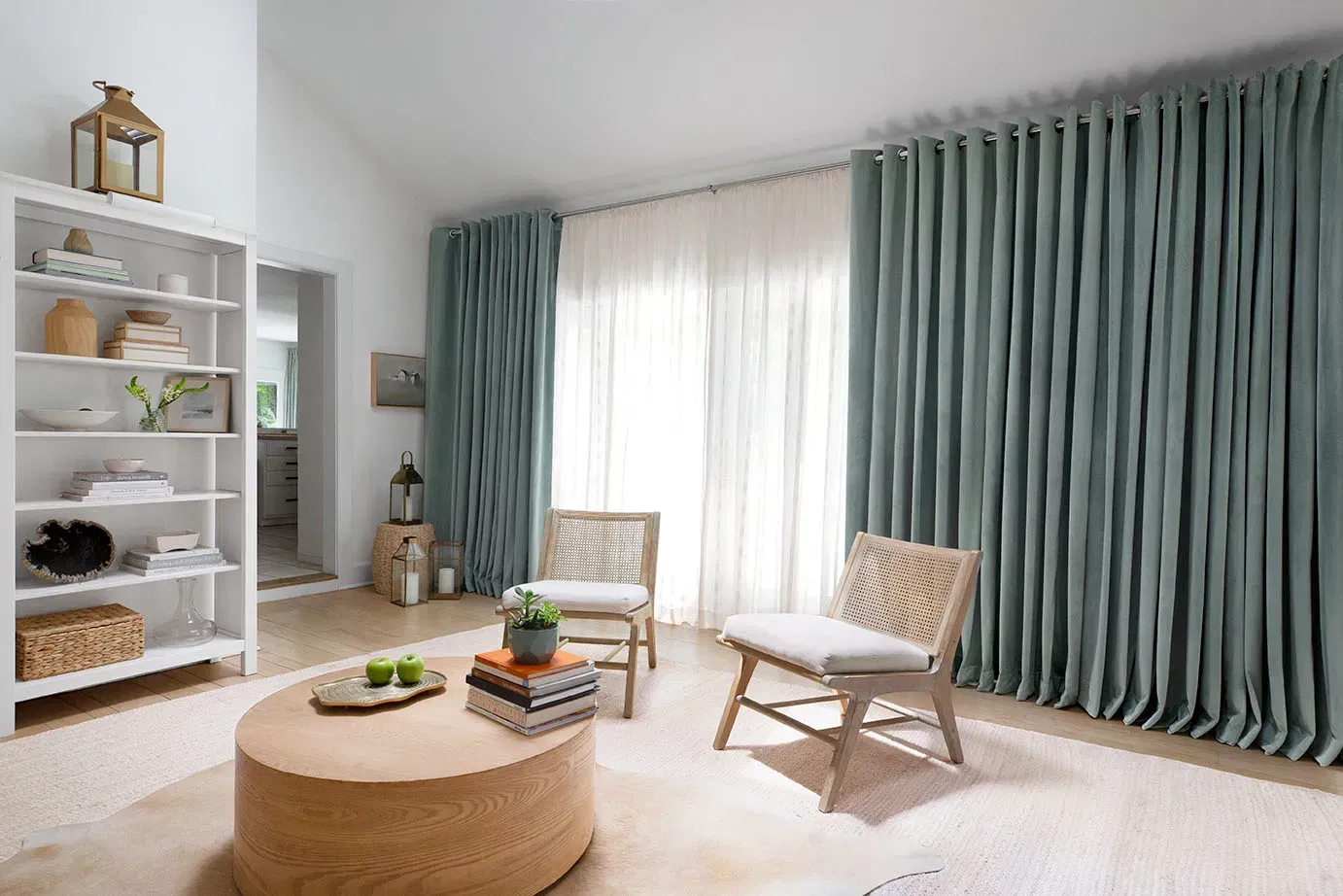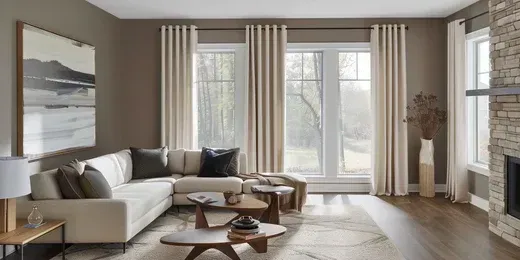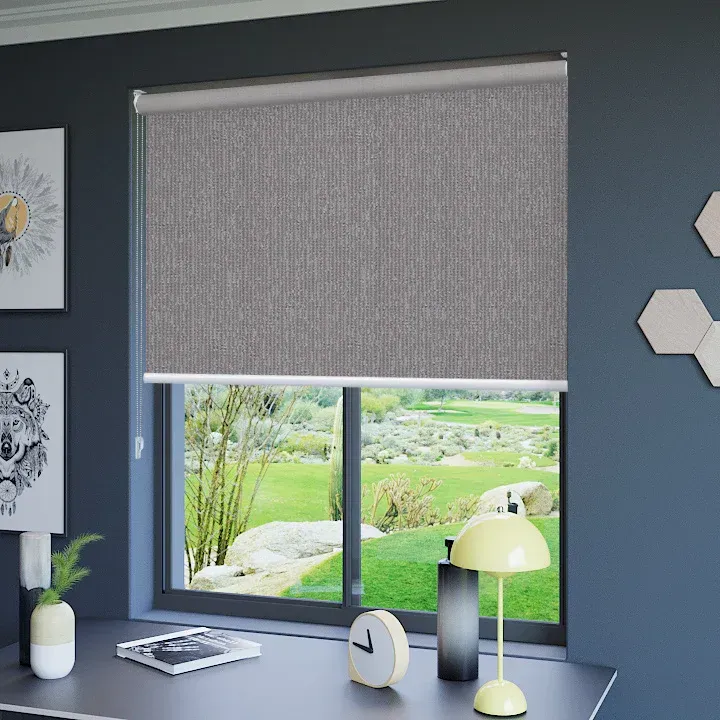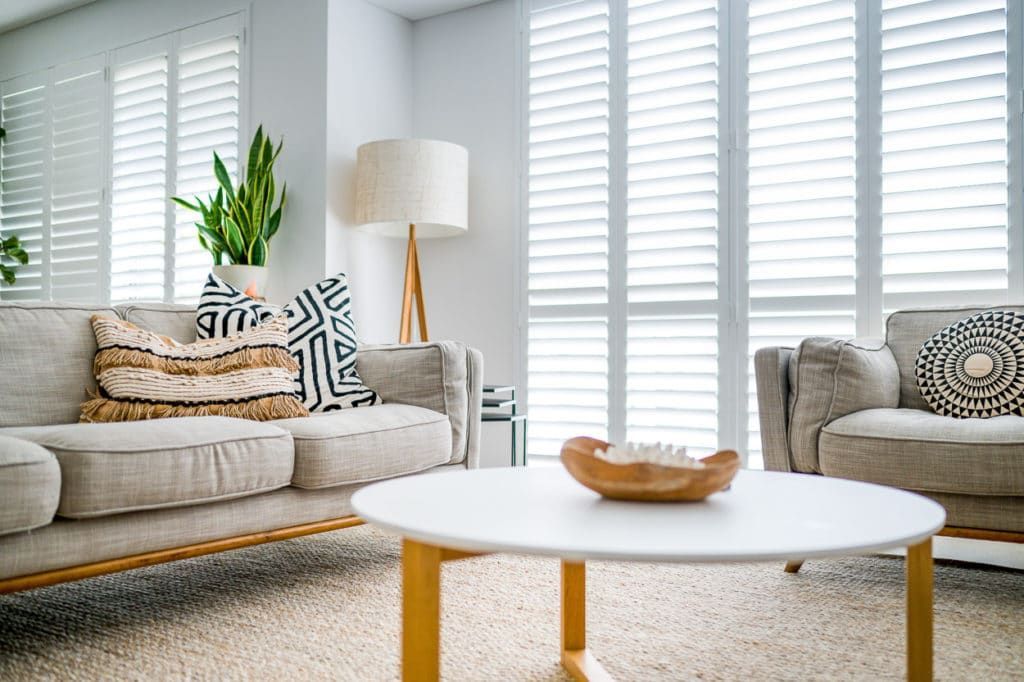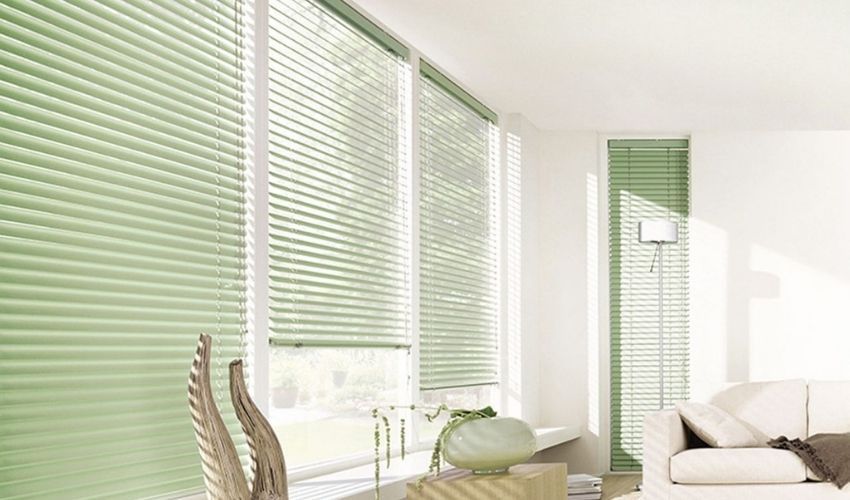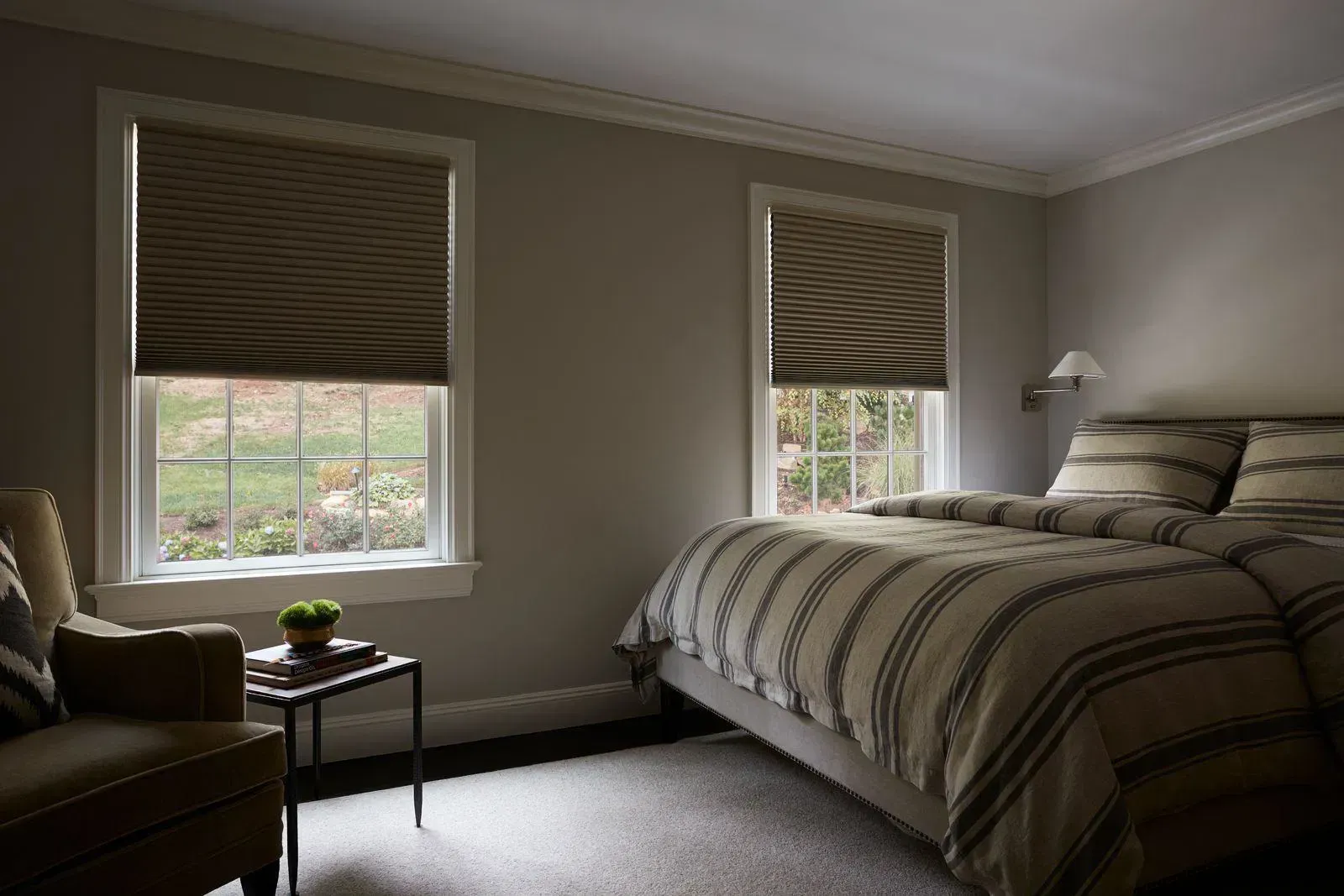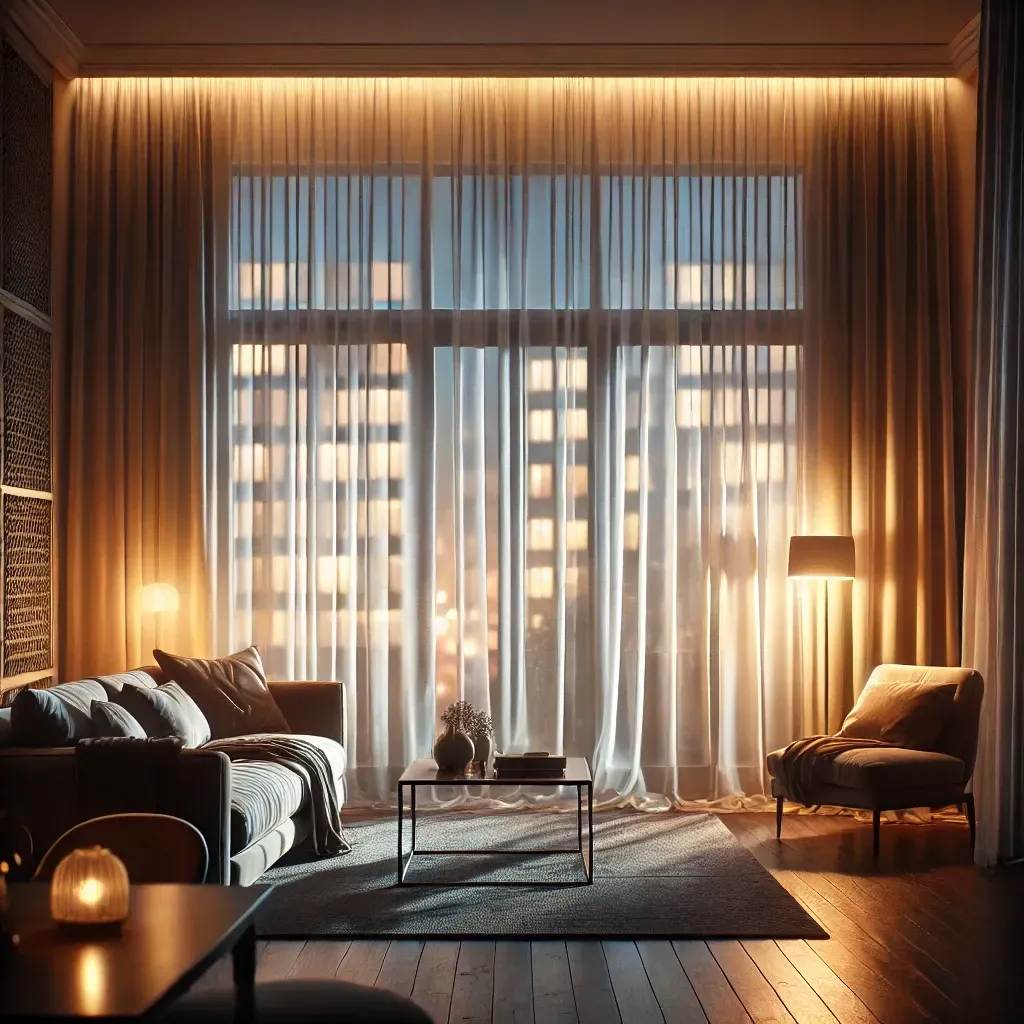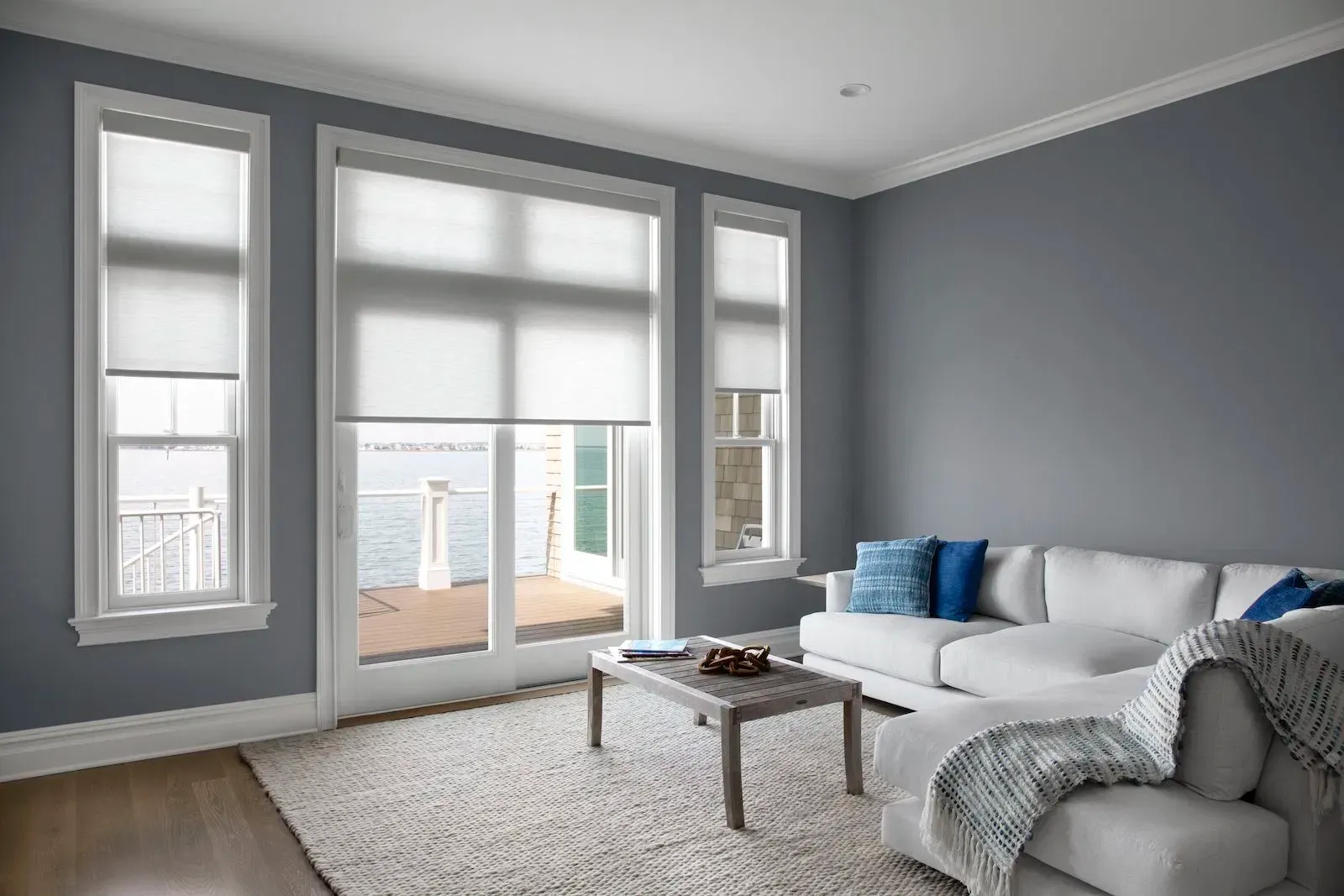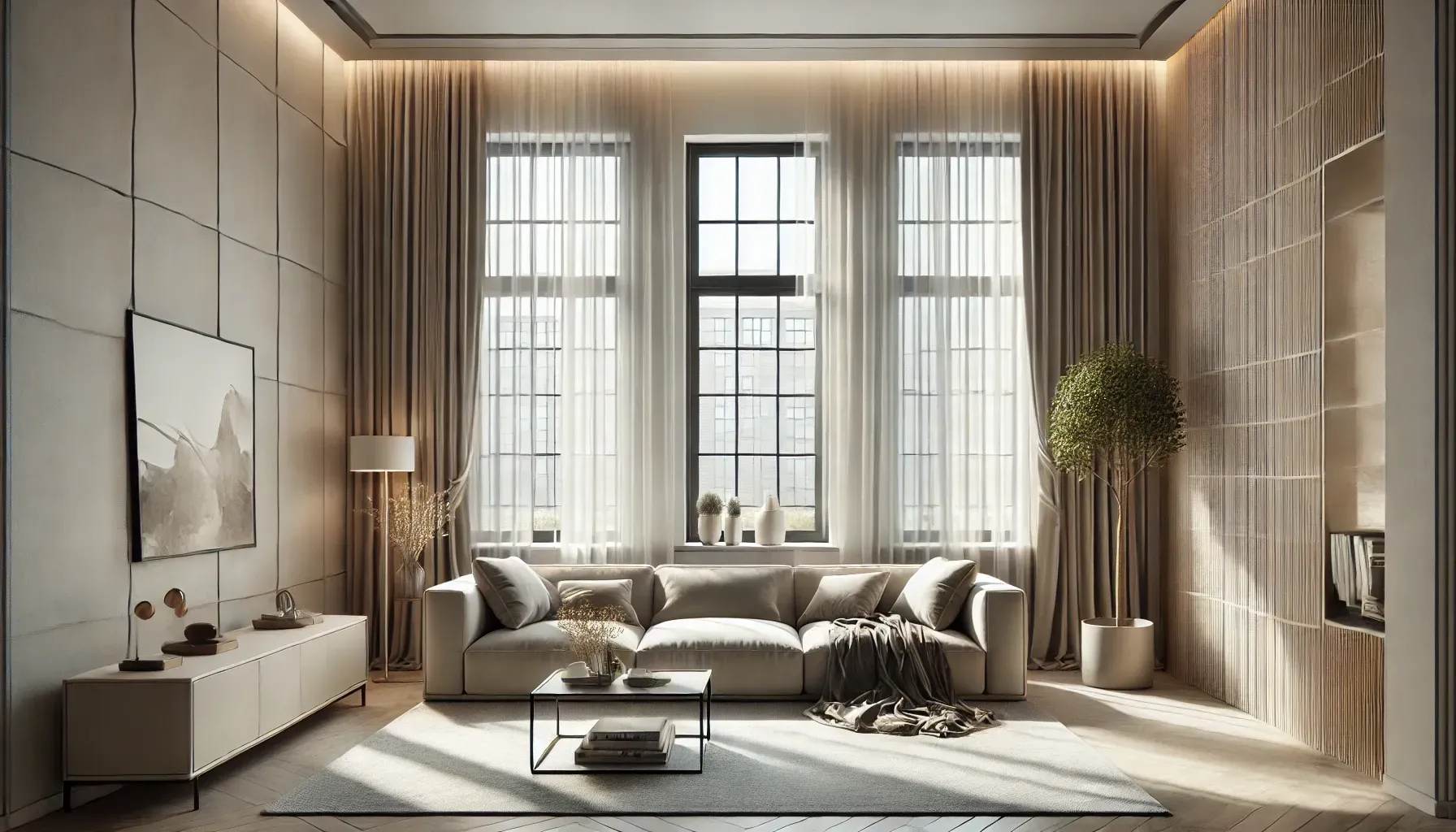How to Choose the Right Window Treatments for Homes in Dusty Areas
When selecting window treatments for homes in dusty areas, prioritize materials and designs that resist dust accumulation and are easy to clean, such as faux wood shutters, roller shades, or vertical blinds. These options minimize dust buildup and simplify maintenance, ensuring a cleaner and healthier living environment.
Dust-prone areas pose unique challenges for maintaining a clean home. Window treatments, in particular, can quickly become magnets for dust and allergens, impacting both aesthetics and air quality. In this guide, we’ll explore the best window treatment options, provide practical cleaning tips, and help you make informed decisions tailored to dusty environments.
Understanding the Impact of Dust on Window Treatments
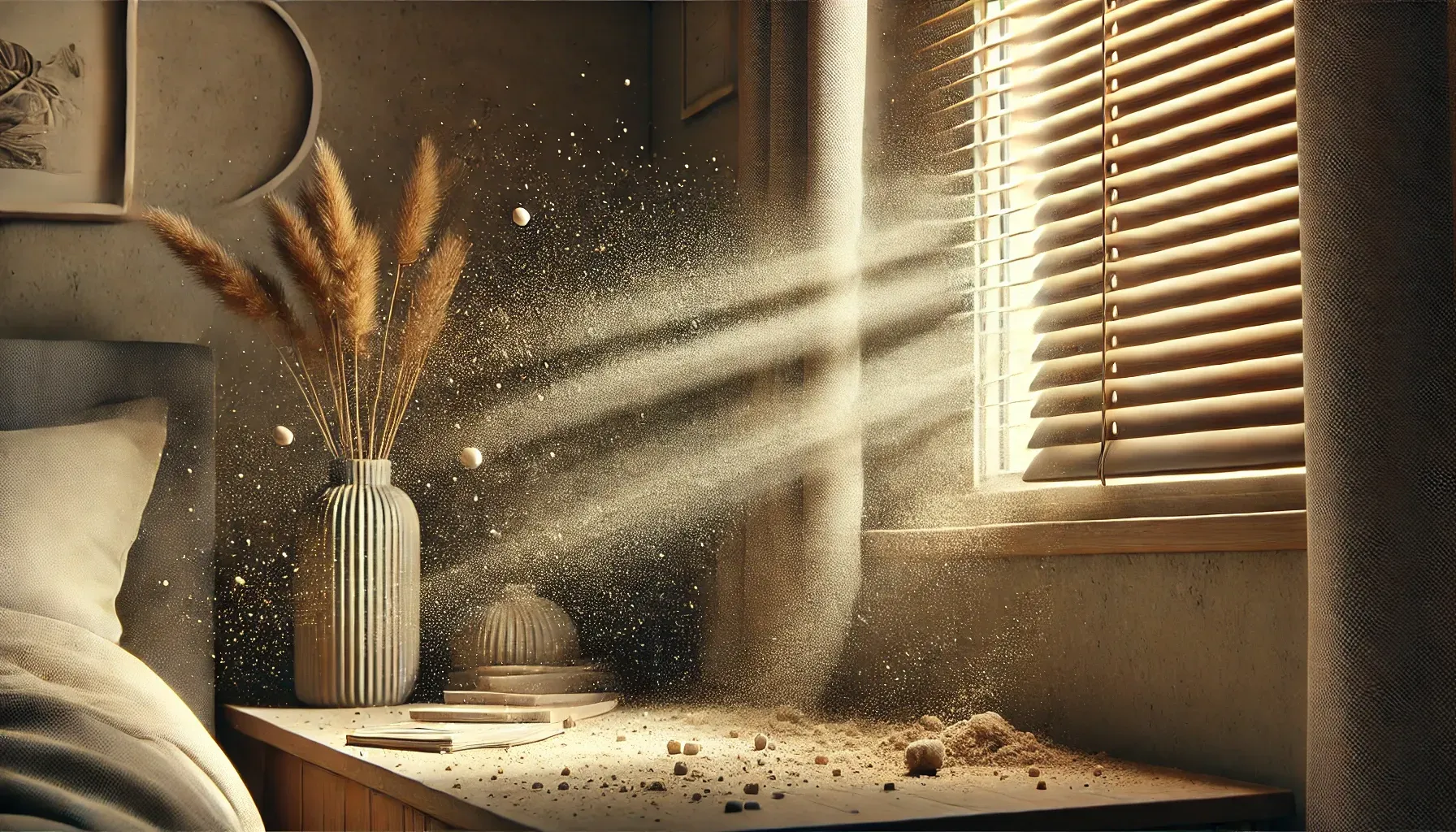
What Is House Dust and Why Does It Matter?
House dust is a mixture of particles, including dead skin cells, pet dander, pollen, and other microscopic debris. In dusty areas, outdoor elements like sand or fine dirt add to the accumulation, creating a persistent cleaning challenge.
For individuals with allergies or respiratory issues, the buildup of dust on window treatments can exacerbate symptoms. Therefore, choosing dust-resistant and hypoallergenic options is essential for maintaining a healthier home.
Best Window Treatments for Dusty Environments
1. Roller Shades
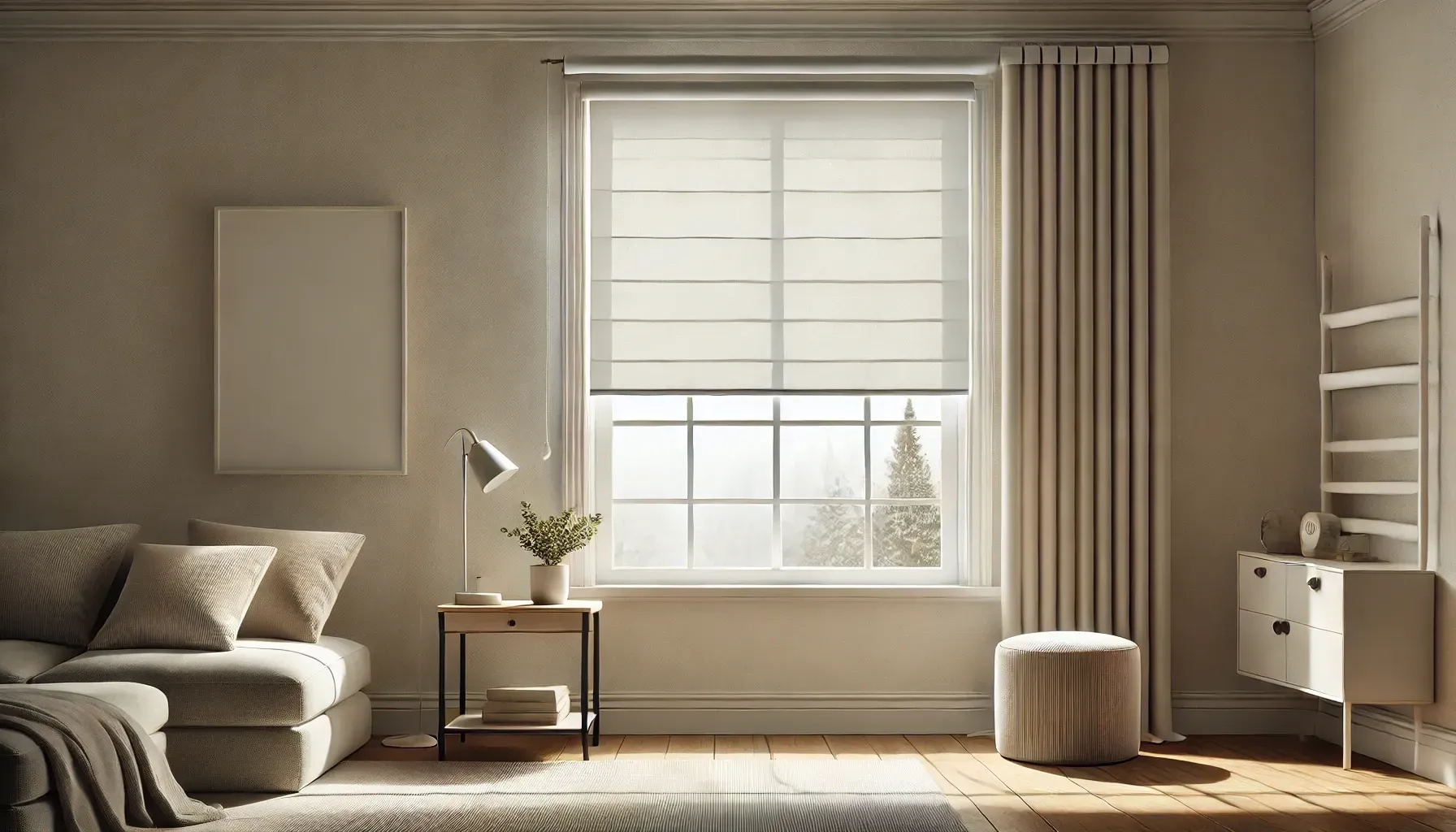
Roller shades are a top choice for dusty areas due to their sleek, flat design. This structure prevents dust from settling deeply, and their smooth surface makes cleaning quick and straightforward. Simply wipe them down with a damp cloth or vacuum with a brush attachment.
2. Plantation Shutters (Faux Wood or Vinyl)
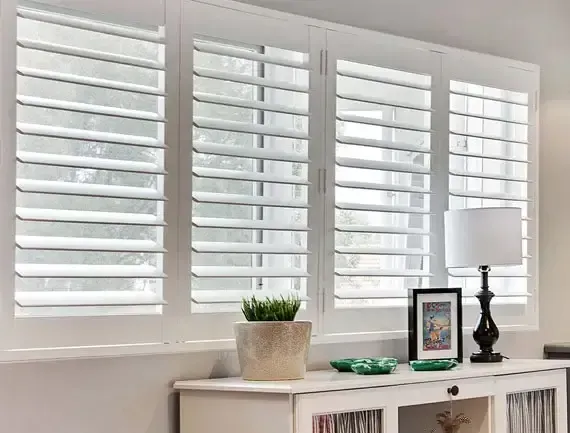
Plantation shutters made of faux wood or vinyl are durable, moisture-resistant, and easy to clean. Their broad slats reduce dust accumulation compared to narrow-slat blinds. A quick wipe with a microfiber cloth or mild cleaning solution keeps them looking pristine.
3. Vertical Blinds
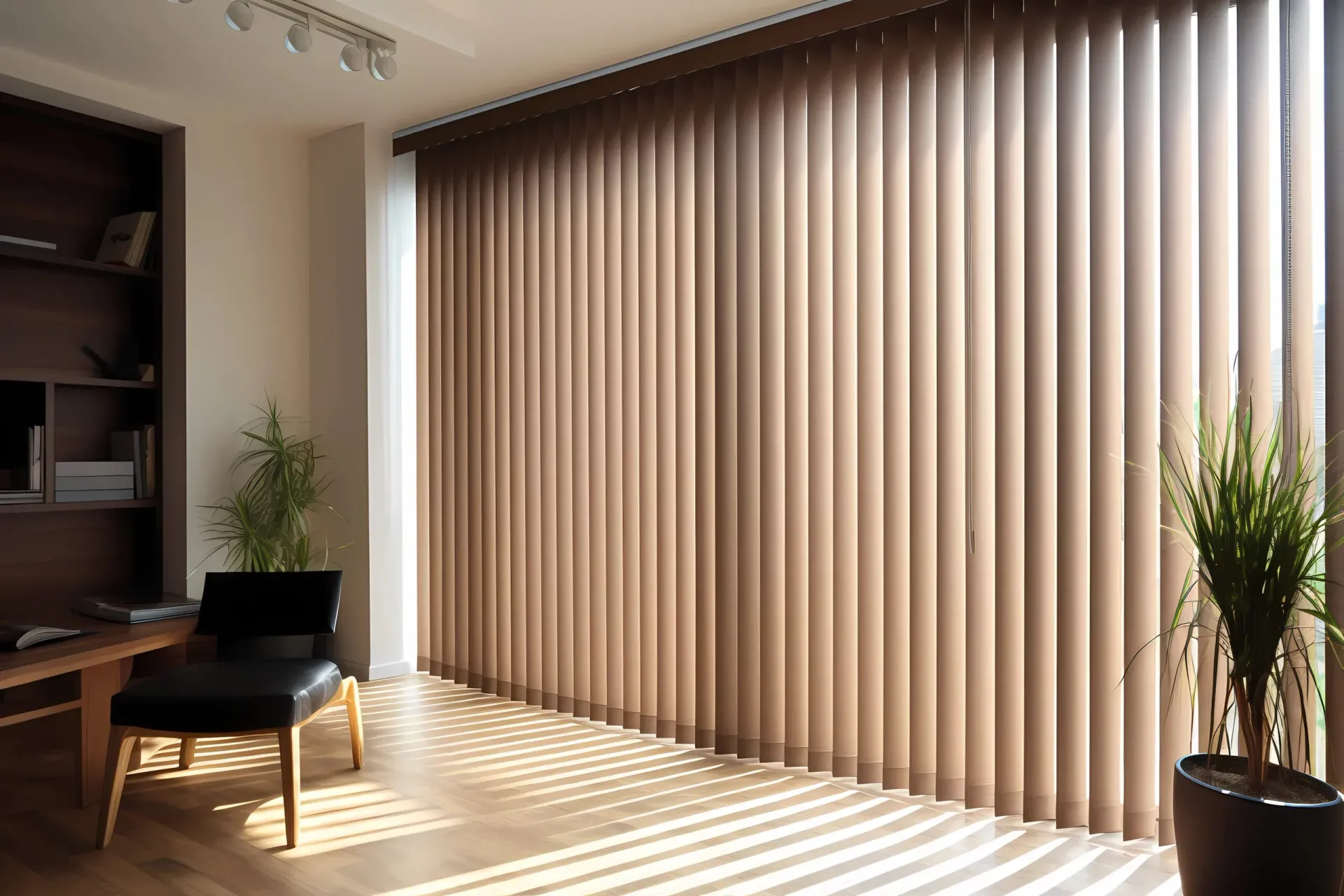
Vertical blinds are another practical option. Their vertical orientation means less horizontal surface area for dust to settle. They’re ideal for large windows or sliding doors and are available in dust-resistant materials like PVC or treated fabric.
4. Cellular Shades
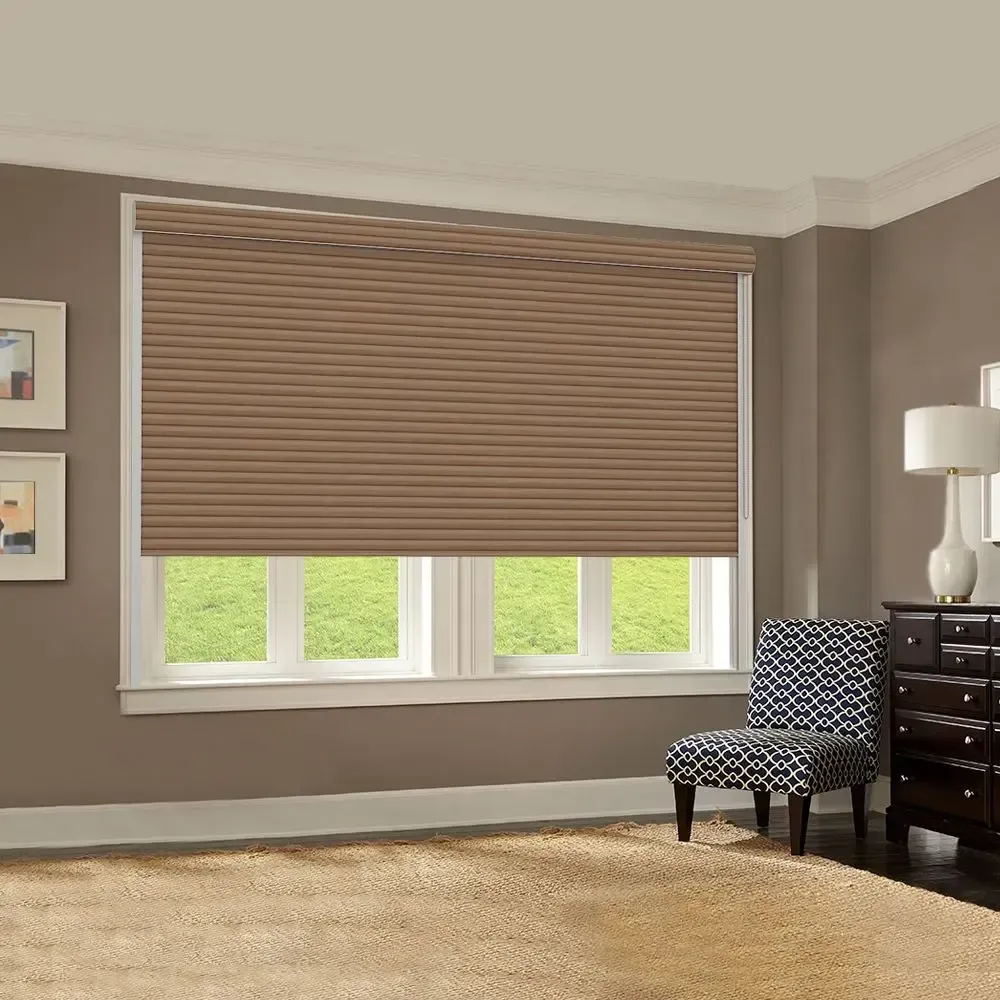
While cellular shades can trap some dust within their honeycomb structure, many are crafted from materials that repel dust and are easy to maintain. Regular vacuuming and occasional deep cleaning ensure they remain both functional and visually appealing.
5. Metal or Faux Wood Blinds
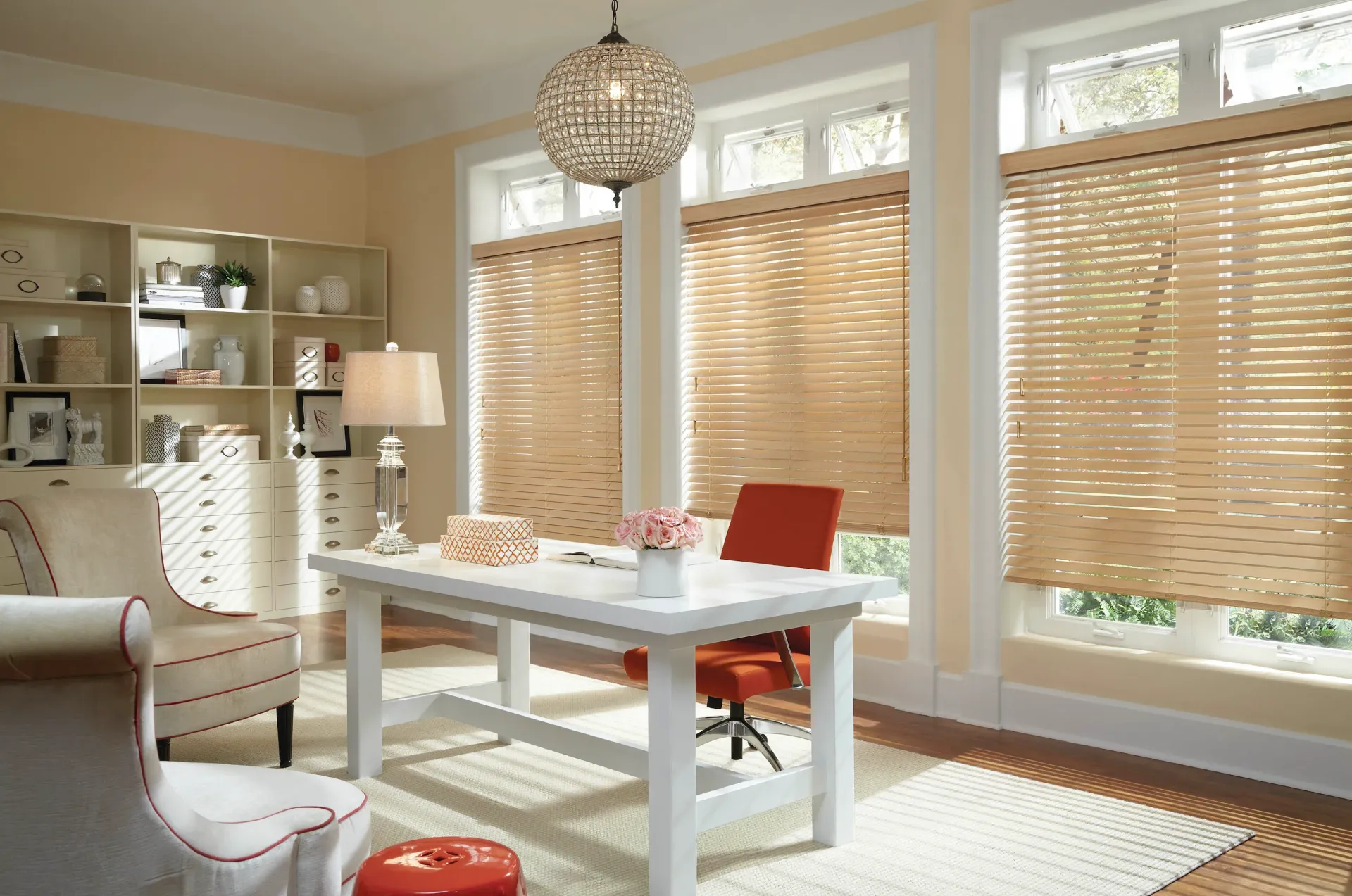
Blinds made from aluminum or faux wood are highly resistant to dust and allergens. Their non-porous surfaces prevent particles from embedding, making them easier to clean than traditional fabric options.
Window Treatments to Avoid in Dust-Prone Areas
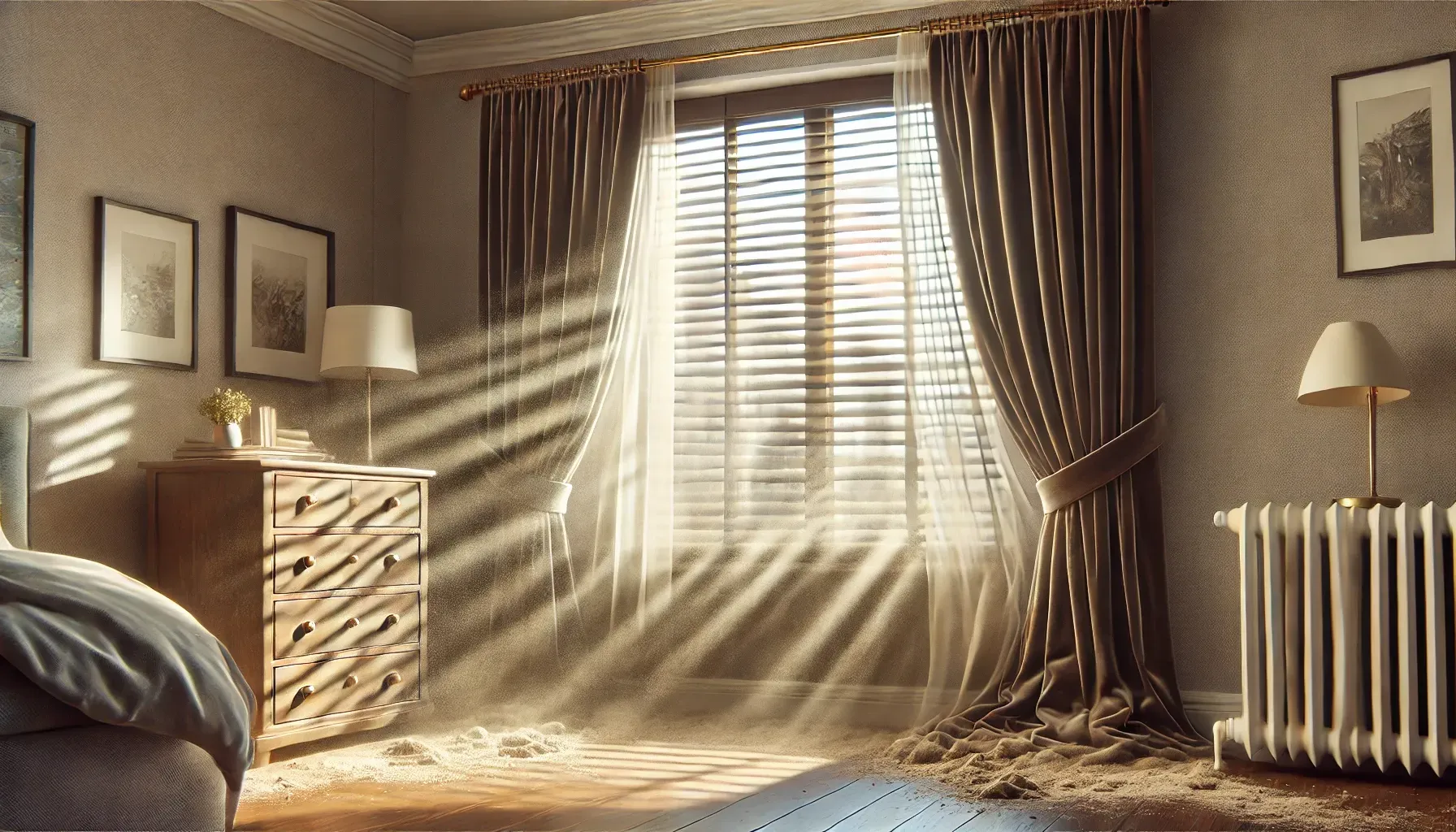
Heavy Drapes and Curtains
Thick fabric window treatments, such as velvet curtains or heavy drapes, tend to trap significant amounts of dust. Cleaning them often requires professional laundering, making them impractical for dusty homes.
Horizontal Blinds with Narrow Slats
Blinds with narrow slats create more surface area for dust to settle and are challenging to clean thoroughly. Opt for wider slats or alternative designs to reduce maintenance efforts.
Maintenance Tips for Window Treatments in Dusty Homes

1. Regular Cleaning Routine
Set a consistent schedule for cleaning your window treatments. For most options, weekly dusting with a microfiber cloth or vacuuming with a soft brush attachment is sufficient. For more detailed guidance on cleaning specific types of blinds, refer to our Venetian Blinds Cleaning Guide.
2. Use Dust-Repellent Sprays
Consider applying dust-repellent sprays to blinds and shutters to reduce the frequency of cleaning. These sprays create a barrier that prevents dust from clinging to surfaces.
3. Invest in Air Purifiers
Air purifiers with HEPA filters can significantly reduce airborne dust particles, minimizing the amount that settles on window treatments. Pair this with regular HVAC maintenance to further control indoor dust levels.
Balancing Aesthetics and Functionality
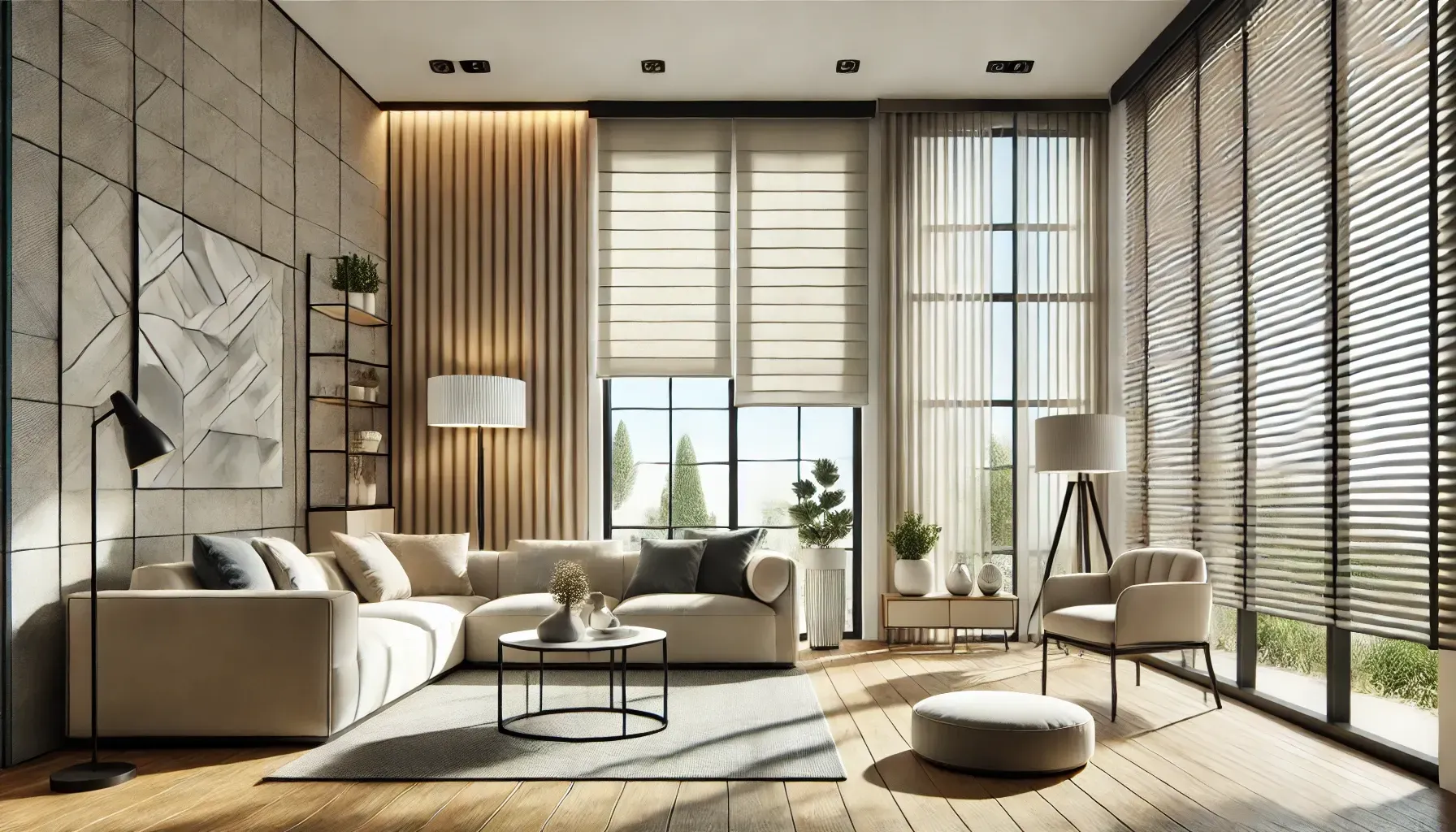
While practicality is crucial, your window treatments should also complement your home’s decor. For a modern look, consider roller shades or cellular shades in neutral tones. Plantation shutters offer a timeless, elegant aesthetic, while vertical blinds suit contemporary spaces with large windows.
Additional Considerations
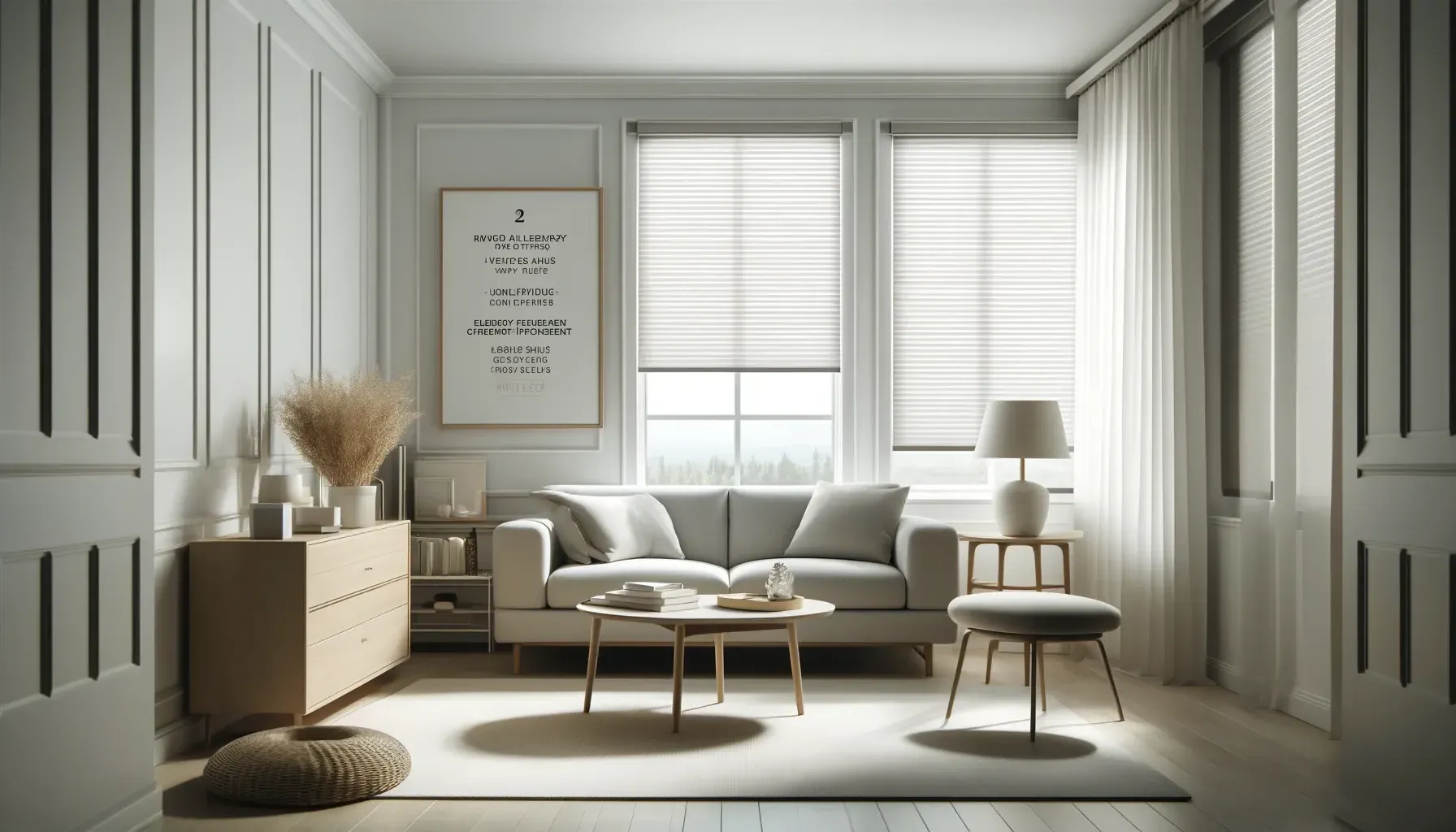
Hypoallergenic Options
For allergy sufferers, select hypoallergenic window treatments made from non-porous materials like vinyl or treated fabric. Avoid materials that trap allergens, such as untreated fabric or natural wood.
Energy Efficiency
In addition to resisting dust, some window treatments like cellular shades can improve energy efficiency by insulating your home against heat and cold.
Budget Constraints
Durable, low-maintenance options like faux wood blinds are often cost-effective while providing excellent dust resistance.
Conclusion
Choosing the right window treatments for homes in dusty areas doesn’t have to be a daunting task. Opt for dust-resistant materials like faux wood, vinyl, or metal, and prioritize designs that are easy to clean, such as roller shades, plantation shutters, or vertical blinds. By combining functionality, style, and regular maintenance, you can create a cleaner, healthier, and more beautiful home environment.

